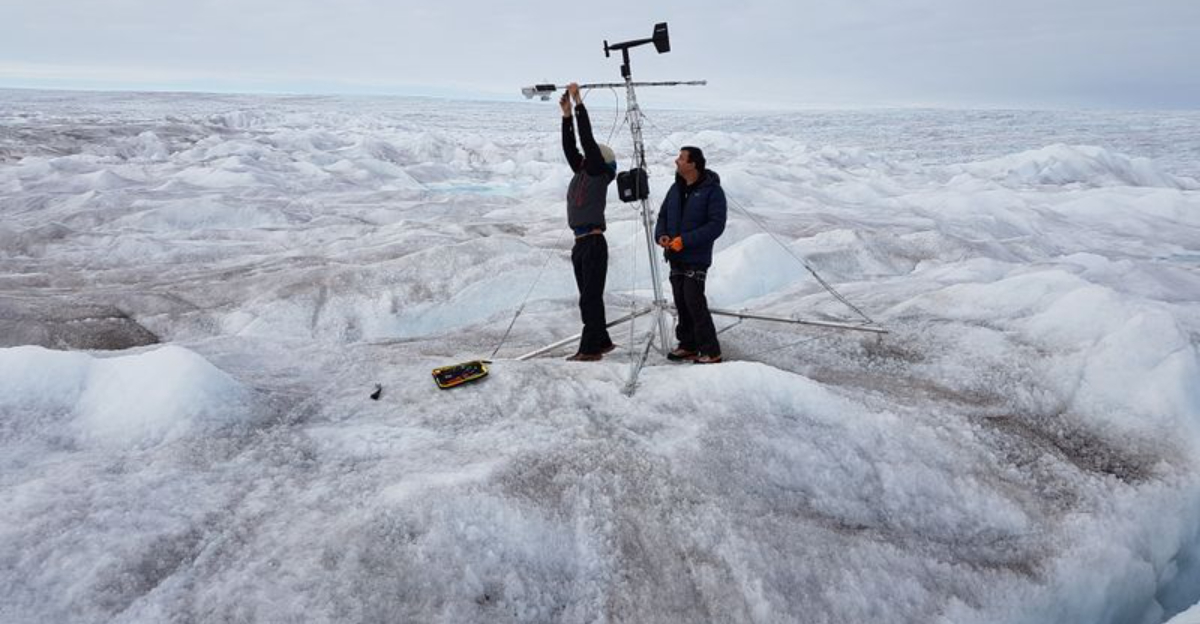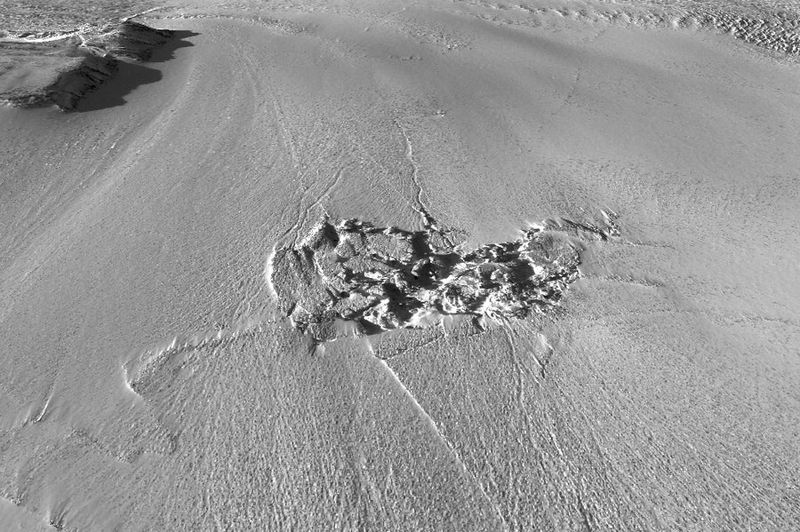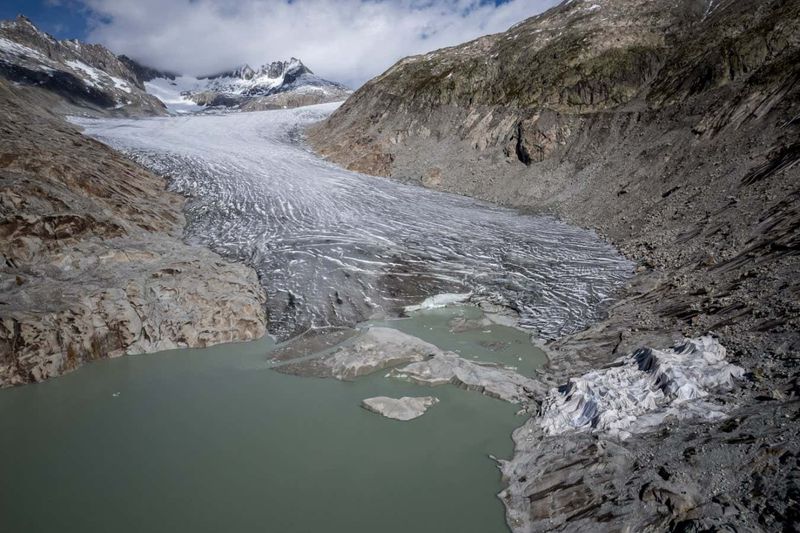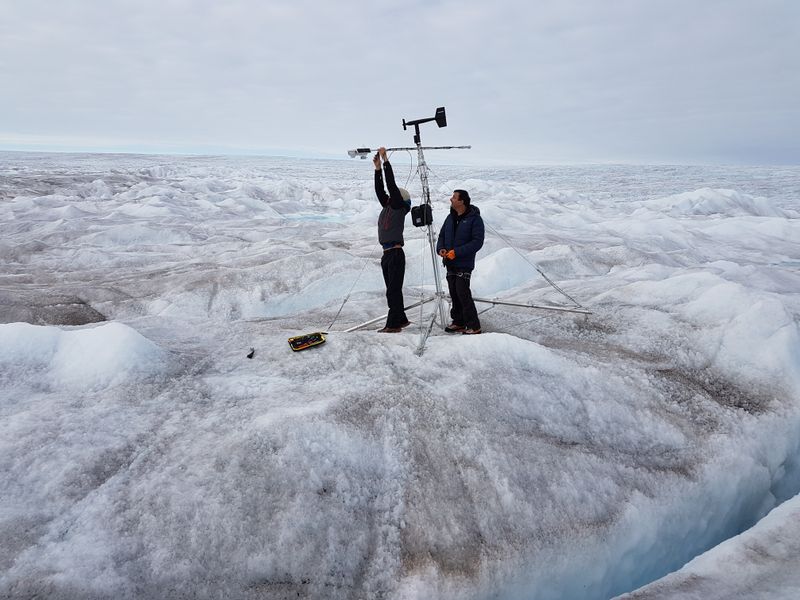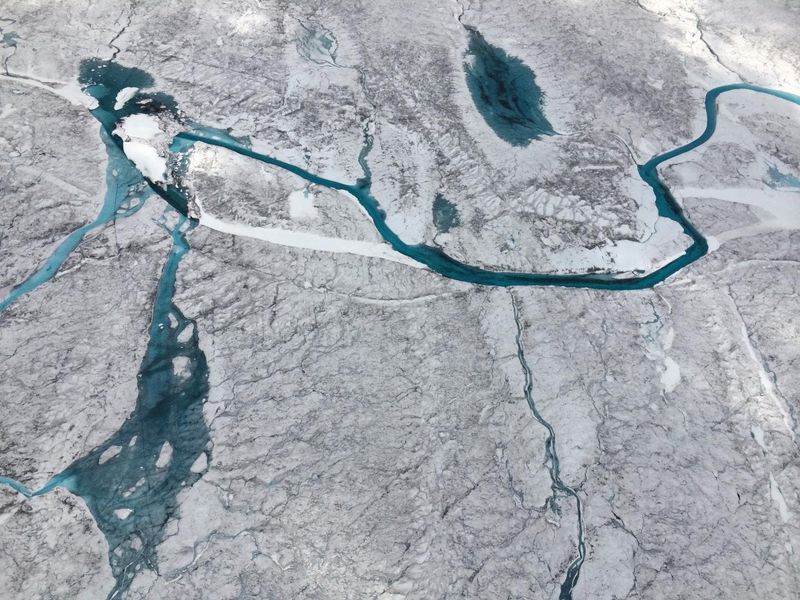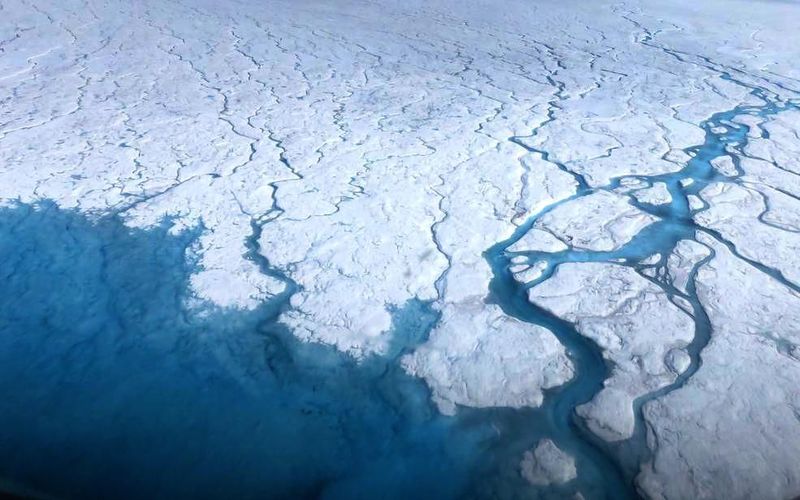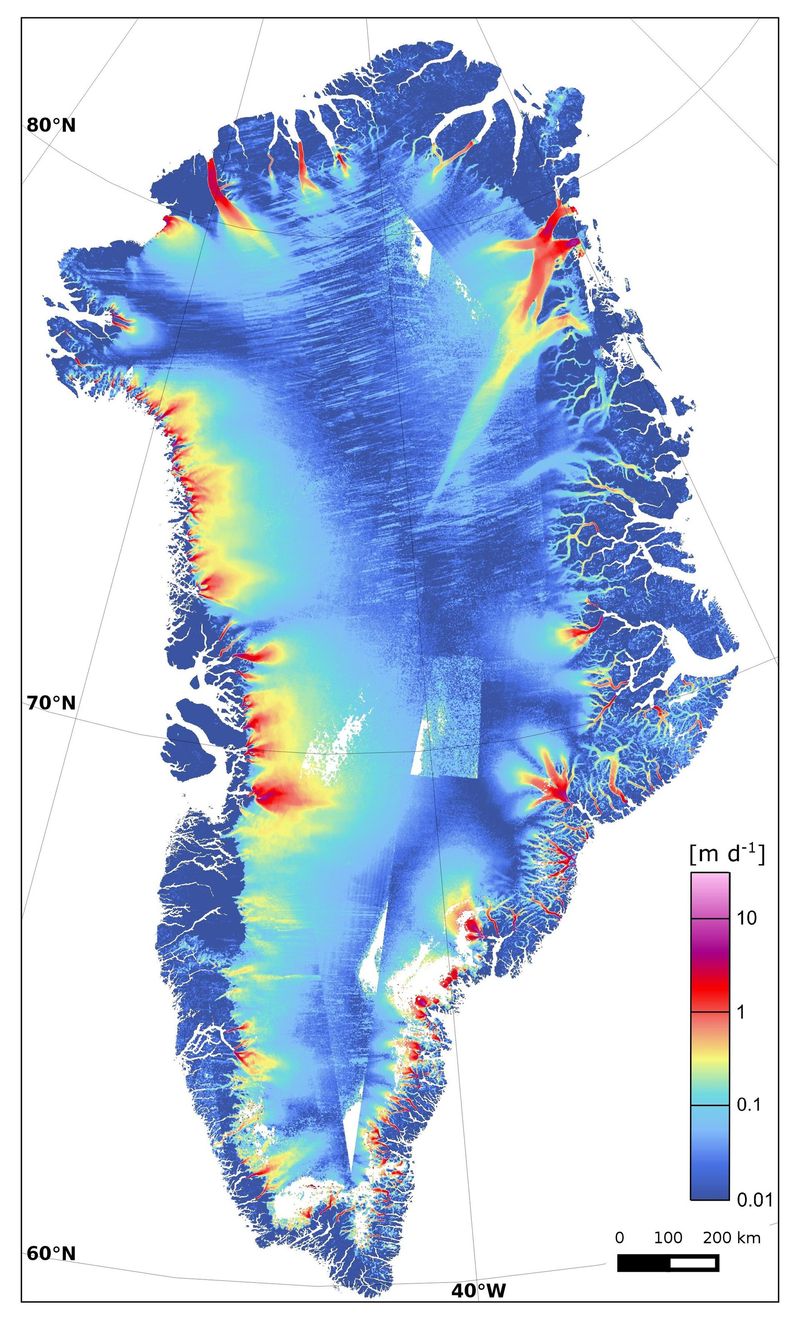Deep beneath Greenland’s frozen surface, something incredible happened in 2014 that scientists didn’t notice until years later. A massive underground lake of meltwater suddenly exploded upward through thick ice, releasing billions of gallons and reshaping the landscape above. This hidden event has changed how we understand ice sheets and their role in rising sea levels, revealing that the dangers lurking beneath the ice might be just as important as the melting we can see on the surface.
The Hidden Flood Breaks Through Ice
Back in 2014, roughly 90 billion liters of trapped meltwater—enough to fill 36,000 Olympic swimming pools—burst violently upward through Greenland’s ice sheet. Nobody witnessed it happening in real time. Years passed before satellite images revealed the true scale of destruction left behind.
The force was staggering. Water ripped through tens of meters of solid ice, fracturing the frozen surface and scattering enormous blocks downstream like toys. Scientists had never documented anything quite like this in Greenland before.
What makes this event truly unsettling is its invisibility. For years, this catastrophic flood remained completely hidden from human eyes. Only advanced satellite technology finally exposed the scars, proving that massive changes can occur beneath the ice without anyone knowing until long after the damage is done.
Surface Collapse: A Drop of 85 Meters
Imagine a building nearly as tall as the Statue of Liberty suddenly sinking into the ground. That’s essentially what happened when this section of ice sheet collapsed 85 meters downward over just 10 days in late July through early August 2014.
Before the collapse, the surface had been bulging upward at alarming rates—between 10 and 15 meters—pushed skyward by mounting water pressure below. The ice was literally being lifted from beneath. Then the system failed catastrophically.
The affected area covered about 2 square kilometers, roughly equivalent to 280 football fields. One moment the ice stood tall; days later, it had plunged into a massive crater. This dramatic transformation demonstrates how underground pressure can overwhelm even Greenland’s colossal ice sheets, turning seemingly solid terrain into collapsing ground with frightening speed.
Scouring, Fractures & Ice Boulders
The floodwaters didn’t just drain away quietly. They carved a chaotic landscape of destruction that extended far downstream, leaving behind a fracture network that completely reworked the surface ice.
Ice blocks towering up to 25 meters high—taller than a seven-story building—were ripped from their positions and scattered across the terrain. An area spanning roughly 6 square kilometers was stripped bare, with snow and ice layers scoured completely away. The raw power needed to move such massive chunks of ice is almost incomprehensible.
What remained was a downstream zone characterized by heavy fracturing and displaced mass, visual proof of the torrent’s overwhelming energy. Scientists studying the aftermath found themselves face-to-face with evidence that subglacial floods can rival the most powerful geological forces on Earth, reshaping vast frozen landscapes in mere days.
Subglacial Lakes & Greenland’s Hidden Hydrology
Scientists have long suspected that lakes hide beneath Greenland’s ice, but this event proved they’re far more dangerous than anyone imagined. These aren’t calm, peaceful bodies of water—they’re pressurized reservoirs capable of explosive breaches.
Trapped water can accumulate over time, building tremendous pressure as more meltwater feeds into the hidden system. Eventually, the ice above can no longer contain the force below. When that threshold is crossed, water doesn’t gently seep upward—it erupts with catastrophic violence, penetrating thick ice layers thought to be impenetrable.
This discovery fundamentally changes our understanding of Greenland’s internal plumbing. The ice sheet isn’t just a static frozen mass slowly melting from the surface. Beneath it lies an active, volatile hydrological system capable of sudden, dramatic transformations that can destabilize vast sections of ice in ways climate models never anticipated.
Implications for Ice Sheet Stability & Sea Level
Here’s the terrifying reality: Greenland’s ice sheet contains enough frozen water to raise global sea levels by 7.4 meters if it completely melted. That would submerge countless coastal cities worldwide, displacing hundreds of millions of people.
Scientists previously focused on surface melting as the primary threat. Now they must account for hidden hydrological processes that can mobilize water rapidly and disrupt ice structure from within. These internal dynamics add frightening complexity to predicting how the ice sheet will respond to continued warming.
The 2014 flood suggests that catastrophic collapse events might not require the entire ice sheet to melt gradually. Instead, hidden water systems could trigger sudden instabilities, accelerating ice loss far faster than current models predict. Understanding these processes isn’t just academic curiosity—it’s essential for protecting vulnerable coastal populations from potentially rapid sea level rise.
The Urgency of Understanding the Hidden System
Scientists freely admit they’re still largely in the dark about how ice sheets respond internally to climate change. The 2014 event was discovered purely by luck—someone happened to analyze the right satellite images at the right time.
Continuous remote sensing of Greenland’s interior has become absolutely critical. Without satellites constantly watching from above, these catastrophic events could happen repeatedly without detection. We’d be flying blind, unable to understand or predict the ice sheet’s behavior as temperatures continue rising.
Climate change is intensifying surface melting year after year, feeding more water into these hidden subglacial systems. As pressure builds beneath the ice, these reservoirs may play an increasingly important—and dangerously unpredictable—role in ice behavior and sea level rise. The race is on to understand these processes before the next catastrophic flood catches us completely unprepared.
